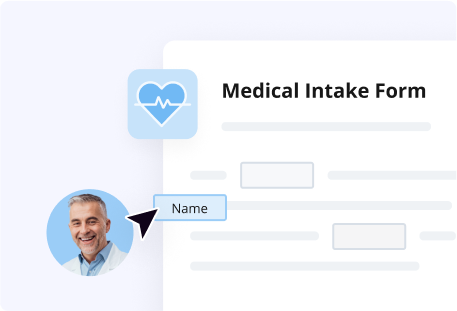Type any topic that interests you
Unlock the ins and outs of automating medical office patient intake questions form for urgent care with certification course

About the program
You’ll learn to design a streamlined and automated patient admission process using airSlate. This skill will help you increase the efficiency and precision of your patient intake flow, ultimately saving time and removing errors.
What’s provided:
- Lessons covering the principal aspects of building a Flow.
- Quiz helping you brush up on what you’ve already learned about medical office patient intake Unlock the ins and outs of automating medical office patient intake questions form for urgent care with certification course for urgent care with certification course.
- Badge reflecting the milestones you gained throughout the course.
What will you learn in this certification course?
- How to generate medical office patient intake Unlock the ins and outs of automating medical office patient intake questions form for urgent care with certification course Flow with dynamic fillable form(s).
- How to create a conditional order of steps within your flow for urgent care .
- How to automate information routing between external software and systems and your form.
- How to get insights from patient intake flows with airSlate certification course.
Who is this certification course for?
- Doctors, nurse practitioners, and medical professionals trying to improve the quality of urgent care care they provide.
- Front office staff taking care of admin matters and patient data changes, including the processing of medical office patient intake Unlock the ins and outs of automating medical office patient intake questions form for urgent care with certification course.
- Administrators handling the IT side of healthcare operations and interactions with patients.
More courses you might like
What our students say
Start learning today
Sign now for free
Questions & answers
The benefits of automating the medical office patient intake questions form for urgent care include improved productivity, record processing accuracy, and cost savings. By automating patient intake operations, healthcare providers can achieve a multitude of advantages, including minimizing wait times, eliminating the necessity for manual information entry, reducing expenses associated with printing and postage, and boosting document security. Moreover, it considerably improves patient satisfaction by offering a smooth and efficient intake flow that reduces waiting times, streamlines data collection, and removes potential mistakes and inaccuracies.
To register for the certification course on medical office patient intake questions form Flow for urgent care , simply set up an account with the airSlate Academy and confirm your email address to unlock a plethora of educational resources. Then choose the course or start with the one for beginners to grasp how airSlate works in general. With access to high-quality training materials, visuals, and quizzes, you can broaden your knowledge, improve your understanding, and move your career forward at your own pace.
airSlate is focused on flexibility. You can pick how to start setting up your Flow: completely from scratch, using your own document(s), or get a head-start with our ready-to-use medical office patient intake questions form templates. You can find more in-depth information on putting together and launching the Flow within our new certification course.
At airSlate, a Flow (in our case medical office patient intake questions form Flow for urgent care ) is a procedure encompassing a set of file templates and fillable forms. They can be automated and customized leveraging pre-established rules. Flow automation solutions help companies decrease manual workload and streamline recurring operations.
The objective of medical office patient intake questions form is to collect and handle essential information, generally at the initial point of interaction with a patient. This data usually includes demographic data, medical history, insurance information, and other information that will allow medical care workers ensure that the patients get exceptional care. By gathering this information, medical care companies can simplify the care process and make sure patients receive the best possible care.
The medical office patient intake is a critical part of patient registration. It enables healthcare providers to collect essential patient data by means of questions form, like personal and contact details, health history, visit scheduling, and insurance data. Patient registration considerably affects your clients’ general experience by establishing a favorable first impression, minimizing waiting times, and offering healthcare personnel with precise data for treatment and insurance claims.











